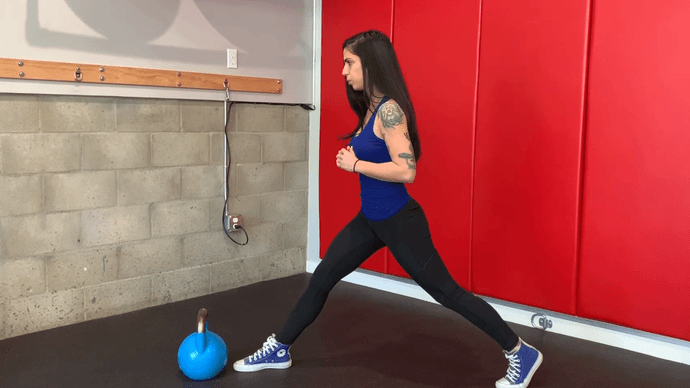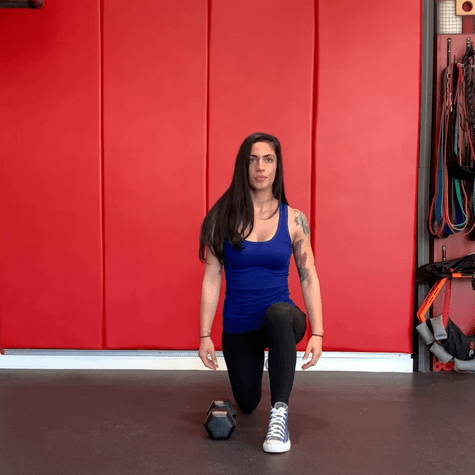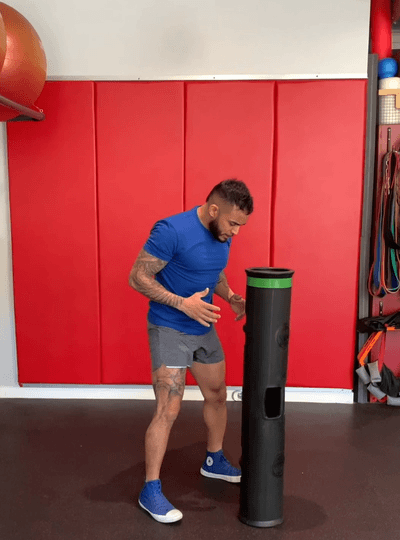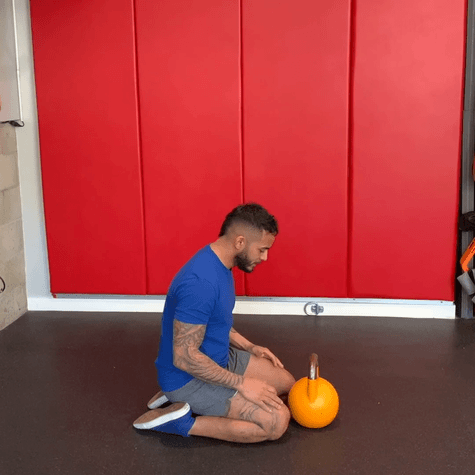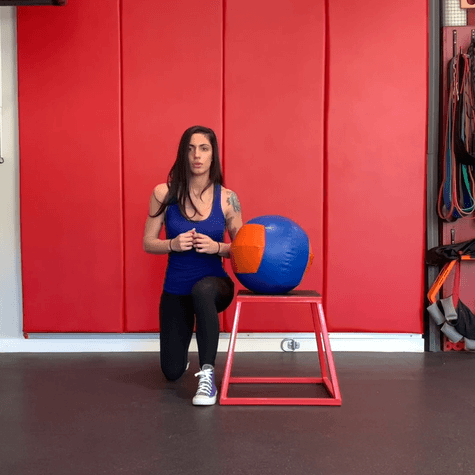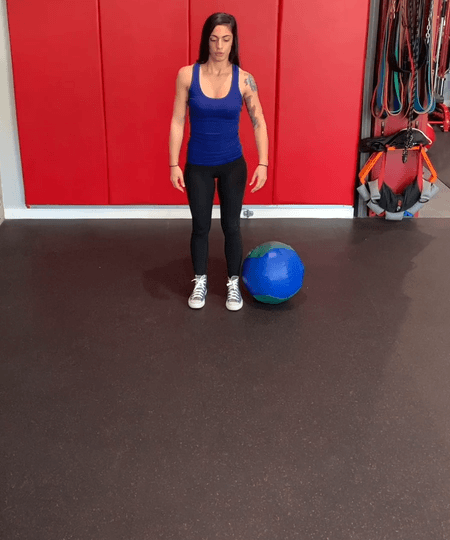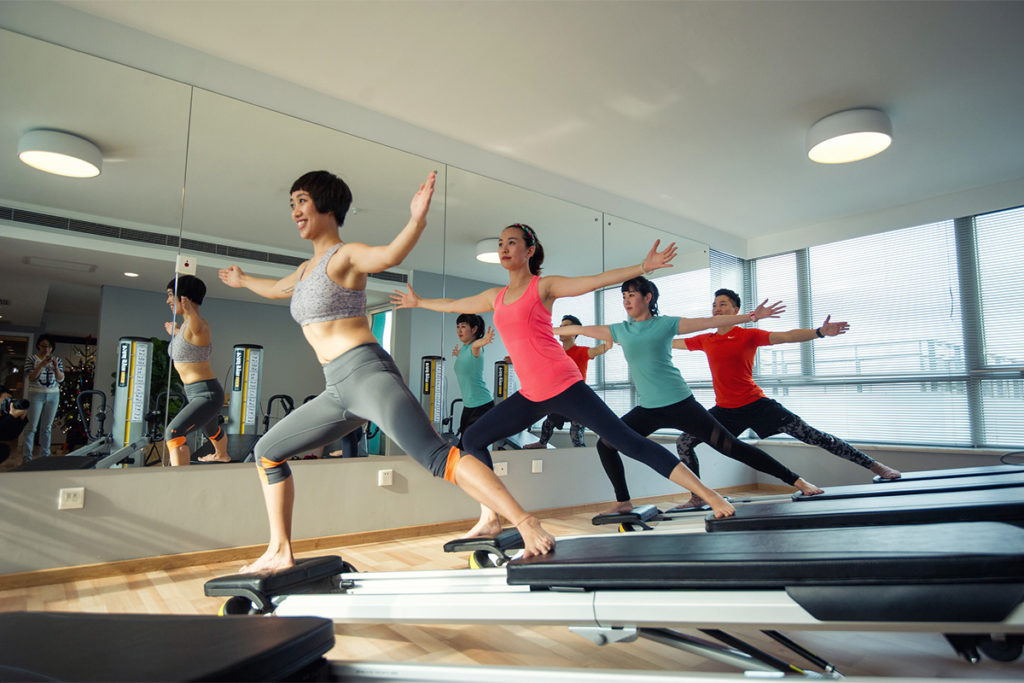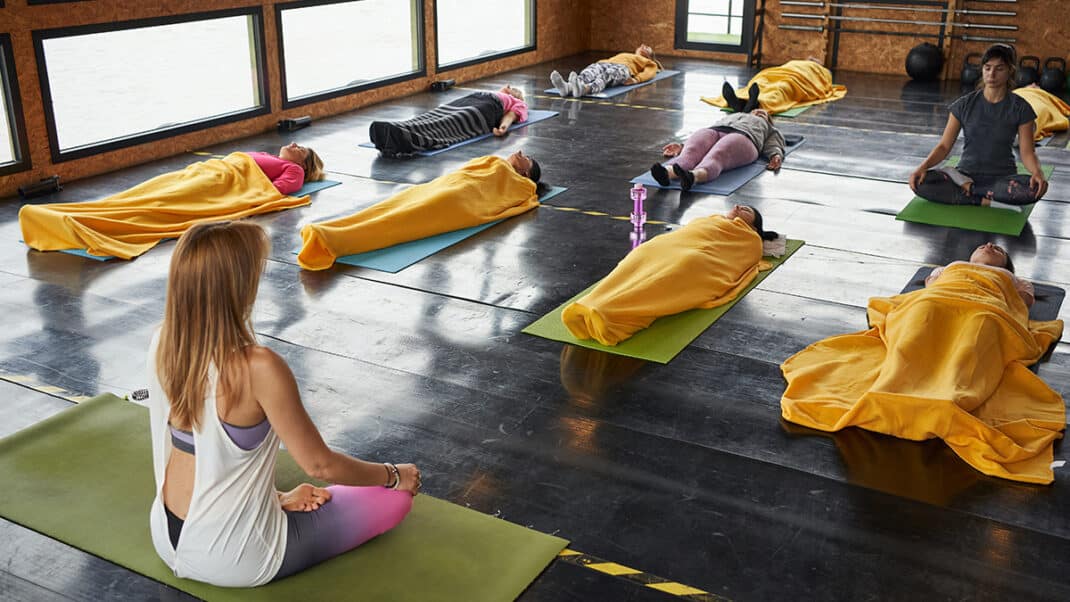Variable Deadlifts & Deadshifts
Why you need to push past the limits of pulling heavy weight with a barbell by using the compound movements of variable deadlifts and deadshifts.

Are you missing out on the benefits of variable deadlifts and deadshifts? Consider this scenario: It’s 2 a.m. Your 3-month-old son is screaming at the top of his tiny lungs, waking up everyone in the household. You lie still, pretending to be asleep, knowing it’s your turn to get up and console your little one. Then you feel a nice solid push in the back: Your partner knows your game—and is not playing.
Begrudgingly, you get out of bed and zombie-walk over to your son’s crib in the next room. Your body aches, you haven’t slept in days, and now you must bend over to pick up a squirming child in the dead of night. Unfortunately, your son’s not a great strength coach and doesn’t allot enough warmup time to prepare your body for a deadlift. You bend awkwardly over the edge of the crib, grab the 12-pound mass to lift him up—and zap! Your lower back spasms, vise-gripping your spine and bringing you to the floor in agony.
In the gym, you can deadlift over 300 pounds. What’s going on here? Simple: When you lift your relatively light son out of his crib, your body can’t tolerate the demand. This is a great lesson on the SAID Principle (Specific Adaptation to Imposed Demands). During a workout, we deadlift repetitively in the same bilateral stance, lifting as much mass as possible to thigh/hip height. The problem is that our life and sporting endeavors rarely require lifting a maximal load in the classic gym motion. By contrast, we often need to lift—or shift—light loads from odd positions to accomplish various everyday tasks. The key word is “various”: Sometimes our training doesn’t match the variables that life throws at us.
In this article, we’ll define what variable deadlifts are and address the need for variable lifting. We’ll also introduce the deadlift’s forgotten cousin—the deadshift—and show how to integrate both movements into a well-rounded strength and conditioning program for life or sport performance.
Defining Variable Deadlifts and Deadshifts

Deadlifting moves a resting mass up and down, while deadshifting moves a stationary mass horizontally.
As a strength coach or personal trainer, you probably think of deadlifting as tugging a really heavy barbell up off the ground to hip height before putting it back down or dropping it before your next rep. This multijoint, compound strength exercise has numerous science-supported benefits:
- high recruitment of type II muscle fibers, based on Henneman’s size principle (Henneman, Somjen & Carpenter 1965; Kompf & Arandjelovic 2017)
- posterior-chain strength (hamstrings, glutes, erectors) (Camara et al. 2016; Bezerra et al. 2013)
- quadriceps strength and core stability (Hamlyn, Behm & Young 2007)
- metabolic stress, stimulating muscle-building hormones like human growth hormone and testosterone (Rietjens et al. 2015; Kraemer & Ratamess 2005)
- enhanced coordination to safely pick up mass off the ground (Vecchio, Daewoud & Green 2017)
- improved power and vertical jump performance (Camara et al. 2016)
But why call it “deadlifting”? Well, “dead” represents the inertia of a resting mass (remember, a mass at rest wants to stay at rest). “Lifting” means moving a stationary mass up and down relative to gravity. Thus, deadlifting overcomes the inertia of a resting mass to move it up and down. Deadshifting, by contrast, means moving a stationary mass horizontally, through a field of gravity, perpendicular to and away from the body’s midline.
Defining deadlifting (and deadshifting) gets us only so far: It doesn’t tell us how much to lift, what position to lift from, how high to lift or at what speed. This means we’re free to vary lifts to challenge the body in all sorts of ways. Picking up a really heavy barbell should be included in a strength protocol. But just as important is picking up variable masses from variable postures and moving those masses to various heights and at various speeds (Piper & Waller 2001).
See also: A 55-Minute Lower-Body Workout With Strength and Cardio Intervals
Variable Deadlifts

We need variable deadlifting exercises to train our bodies to become more resilient.
Barbells, dumbbells and kettlebells provide convenient ways to lift large masses. However, you can probably attest that, on moving day, lifting a large box or your couch is anything but convenient (even when the item is light). On such occasions, we’re not only lifting objects with unique shapes, but we’re in odd postures that we typically don’t assume when training in the gym.
Moving a mass outside the gym requires resiliency—the capacity to tolerate the unique demands of everyday tasks. Whether we’re picking up a child, lifting furniture or simply grabbing our clothes off the floor, we need variable deadlifts to train our bodies to become more resilient. So how does the body become more resilient through exposure to variable training stimuli? Two main factors come into play: a smart nervous system and tissue tolerance.
A Smart Nervous System
A nervous system exposed to variable motor tasks develops motor intelligence. With repeated exposure to a motor task done multiple ways, the nervous system learns how to coordinate the task in the safest, most efficient way—even with all of the task variations that may occur (Stergiou, Harbourne & Cavanaugh 2006; Hikosaka et al. 2002).
In other words, motor intelligence prepares you to perform a task in many different ways. If you’re that parent who threw out your back picking up your son, the problem may have been that you learned only one way to deadlift: holding a convenient object (the barbell) close to the body and lifting it from the same posture/stance. Introducing variable deadlifting patterns (see “Sample Deadlift and Deadshift Exercises,” below) can make you more coordinated and resilient—and more likely to avoid 2 a.m. back strain.
Tissue Tolerance
Tissue tolerance is the ability of our soft tissues (fascia) to have enough tensile strength to accommodate a given task. Compare a conventional barbell deadlift with the Turkish get-up. Both exercises move weight vertically, but the tissue tolerance they require is very different. The conventional deadlift develops sagittal-plane tensile strength, while the Turkish get-up requires tissues to comply with the multiplanar demands of getting the body up off the ground to a standing position while loaded.
Davis’s Law states that soft tissues remodel along lines of stress, adapting based on the concept of mechanotransduction: converting a mechanical stimulus (movement) into chemical activity (cellular adaptation) (Kjaer 2004; Schleip et al. 2012; NASM 2018). This relates to the SAID Principle, since our tissues develop tolerance only in relation to the direction of force placed on them. That’s why our bodies need variable, multiplanar force to develop resiliency. Conventional deadlifting is only a small piece of the puzzle.
See also: Eight Fascinating Facts About Fascia
Deadshifting

Shifting means moving a mass through gravity in all three dimensions.
Have you ever struggled to get your luggage out of the overhead bin on an airplane? Or to drag a box out of the back of an SUV? Each task demands a unique motion. With the overhead bin, you initiate that motion with the mass above you. When moving something out of the trunk of a vehicle, the mass is far from the midline of your body, putting it in an odd position to accomplish the movement. In addition to the odd postures, both tasks demand that we shift mass rather than lift it.
If lifting means moving a mass up or down relative to gravity, then shifting means moving a mass through gravity in all three dimensions. The examples just described fit in the deadshift category because you have to overcome a mass’s resting inertia and then move the mass horizontally or at angles perpendicular to gravity’s down force.
It’s fascinating how rarely we think about deadshifts in strength and conditioning programs. There’s almost no research exploring deadshifts, even though we perform them quite often in life and sport. A teen shoveling snow, a first responder moving an unconscious body, and an older adult grabbing grocery bags from the trunk of the car and moving them into the house are all performing deadshifts.
Although current scientific literature may not provide specific evidence on deadshifting, we can infer some of the potential benefits. Let’s break this down with an exercise called the sledgehammer deadshift, using a ViPR PRO®.
The starting position of the sledgehammer deadshift is unique. You take a wide stance with the ViPR PRO placed lateral of midline, in front of the right foot (see Figure 1). Getting to this posture demands tensile strength through the adductor complex, pelvic-floor muscles and opposing glute. It also requires adequate mobility through the ankle and hips.
From here, you must have enough whole-body starting strength from a posture outside of normal-length tension relationships (we call this “positional strength”) to lift the mass off the floor and then transfer the mass across the body while performing a sledgehammer-type motion, finishing with the mass far from midline (see Figures 2, 3 and 4).
These are the potential benefits of mastering the sledgehammer deadshift:
- tensile strength through the groin, which may reduce groin injury potential
- positional strength from learning to optimize muscular force production from an odd posture
- whole-body starting strength—the type of strength needed to deadlift or deadshift a mass
- multiplanar mobility through the ankle, hips and T-spine
- core strength and stability from engaging a mass when it’s far from our midline (core)
- rotational strength through the hips and core from performing the sledgehammer
- improved coordination from learning a complex, multiplanar, whole-body, task-specific movement
Not bad for just one exercise!
Please check out the sample variable deadlifts and deadshifts below and think about integrating them into your training programs. Your body, your clients and your baby will thank you.
See also: Challenge Play: Connecting Exercise and Fun
Safety Considerations
Variable deadlifts and deadshifts require boundaries to minimize injury and optimize adaptation. Keep these points in mind:
- Lighten the load. While clients may be able to deadlift hundreds of pounds the conventional way, many variable deadlifts and deadshifts demand multiplanar movements from various postures. Use much lighter loads so clients can explore three-dimensional movements while keeping exercises safe and effective.
- Initiate all movements from the hips while keeping a tall spine, regardless of starting position.
- Master the fundamentals first. Clients must be able to squat, bend, lift, rotate and lunge well in any direction before trying variable deadlifts and deadshifts.
- Make sure clients have good mobility through the big three—ankles, hips, T-spine—before engaging in these dynamic movements. This is essential.
- Bring the ground closer for a regression. If a client doesn’t have enough mobility to bend and grab a mass off the ground, put the mass on a platform (like a box or step) so less bending is required.
Sample Variable Deadlifts and Deadshifts
Look for ways to add these variable deadlifts and deadshifts to your weight training programs.
Kettlebell Long-Stance Deadlift
Setup: Assume long split stance. Place kettlebell in front of lead leg.
Execution/cues: Maintaining tall spine, bear weight onto lead leg while bending through hips. Lift kettlebell to chest height as you return to starting position before placing kettlebell back on ground.
Benefits: tensile strength through anterior/posterior compartments of hip (glute on lead leg and hip flexors on trail leg); sagittal-plane positional strength and starting strength with trunk stabilization
Regression: Shorten stance or elevate kettlebell to knee height.
Half-Kneel Windmill Deadlift
Setup: Assume tall half-kneeling stance with dumb-bell on floor, medial to lead leg, in line with hips.
Execution/cues: Maintaining a tall spine, laterally bend through the hips to pick up the weight with one hand while purposely driving the other hand away in the opposite direction. Drive through the floor and stand up to a neutral posture, lifting the mass to hip height. Slowly return the mass and your body back to the starting position.
Benefits: tensile strength through lateral compartments of hip and trunk (gluteal medius, obliques); frontal-plane positional strength and starting strength with trunk stabilization
Regression: Start with dumbbell closer to body.
ViPR PRO® Deadlift
Setup: Assume athletic stance with ViPR PRO on its end in front of body. Using on-tube grip, grab equipment as low as can be controlled.
Execution/cues: Using squat pattern, lift ViPR PRO off ground, keeping the equipment vertical while driving it overhead. With control, bring it back down to ground.
Benefits: starting strength (and a great way to introduce deadlifting to clients who have trouble bending)
Regression: Grab ViPR PRO near its top.
Goblet Get-Up Deadlift
Setup: Assume kneeling posture, sitting on top of feet, with kettlebell resting in front of knees.
Execution/cues: Bow forward, maintaining tall spine to pick up kettlebell at chest height in goblet position. In one movement, transition to half-kneeling posture to stand up. Reverse motion to starting position and be sure to alternate legs with each rep.
Benefits: starting strength to get off ground to standing position
Regression: Place kettlebell on step or small box.
Dumbbell Transverse Sumo Deadlift
Setup: Assume wide stance with feet externally rotated (about 45 degrees) and dumbbell between legs.
Execution/cues: Squat and bend down to grab dumbbell with one hand. While lifting dumbbell off ground, step trail foot to meet lead leg, resulting in 45-degree turn. Reverse motion to starting position and switch sides.
Benefits: starting strength through adductors and pelvic floor.
Regression: Place dumbbell on step/box.
Wide-Stance Bent-Over Deadshift
Setup: Assume wide stance with free weight just in front of right leg.
Execution/cues: Maintaining tall spine, transfer body weight onto right leg by shifting pelvis over right foot while maintaining length in trail leg. Reach across body with left arm to pick up weight. Staying low, transfer body weight to opposite side while shifting mass low to ground until it reaches left leg. Place weight down, then grab it with right arm and shift back to right side, repeating this maneuver until you achieve desired rep range.
Benefits: tensile strength of adductors, pelvic floor and glutes; positional and starting strength in frontal plane; mastery of bent-over posture
Regression: Allow trail leg to bend.
Rotational Pivot Lunge Deadshift
Setup: Place mass on box/step that is knee or hip height. Assume split-stance position next to box/step lateral to lead hip.
Execution/cues: Rotate over lead leg so that trunk faces mass. Pick up mass and then lunge forward with trail leg while shifting mass across body to other side. Return to starting position.
Benefits: tensile strength through hips and obliques; transverse-plane positional and starting strength, core strength and stability
Regression: Keep mass closer to midline.
Single-Leg Romanian Deadshift
Setup: Assume single-leg balance position and place dumbbell in front of stance leg.
Execution/cues: Maintaining tall spine, hinge through hip to pick up dumbbell with opposite arm. Perform lateral lunge while lifting dumbbell to shoulder height. Step back to neutral stance and slowly bring back weight to its starting position using squat pattern before beginning next rep.
Benefits: tensile strength through adductors and pelvic floor; balance and coordination
Regression: Lift dumbbell to hip height or add extra support if balance is an issue.
Medicine Ball Bounding Deadshift
Setup: Assume split stance with medicine ball lateral to lead leg.
Execution/cue: In one fluid motion, pick up ball while explosively bounding forward and shifting mass forward at chest height. Slowly return to starting position before beginning next rep.
Benefits: starting power and acceleration
Regression: Lunge instead of bounding forward.
Our most sincere thanks to George-Anthony Dulal-Whiteway, founder and head coach at Brainstorm Fitness in San Diego, for hosting and modeling for this shoot at his gym. Many thanks also to Evelyn Valdes, who modeled for us, as well. You both make it look easy!
References
Bezerra, E.S., et al. 2013. Electromyographic activity of lower body muscles during the deadlift and stiff-legged deadlift. Journal of Exercise Physiology Online, 16 (3), 30–40.
Camara, K.D., et al. 2016. An examination of muscle activation and power characteristics while performing the deadlift exercise with straight and hexagonal barbells. Journal of Strength and Conditioning Research, 30 (5), 1183–88.
Hamlyn, N., Behm, D.G., & Young, W.B. 2007. Trunk muscle activation during dynamic weight-training exercises and isometric instability activities. Journal of Strength and Conditioning Research, 21 (4), 1108–12.
Henneman, E., Somjen, G., & Carpenter, D.O. 1965. Excitability and inhibitability of motoneurons of different sizes. Journal of Neurophysiology, 28 (3), 599–620.
Hikosaka, O., et al. 2002. Central mechanisms of motor skill learning. Current Opinion in Neurobiology, 12 (2), 217–22.
Kjaer, M. 2004. Role of extracellular matrix in adaptation of tendon and skeletal muscle to mechanical loading. Physiological Reviews, 84 (2), 649–98.
Kompf, J., & Arandjelovic┬┤, O. 2017. The sticking point in the bench press, the squat, and the deadlift: Similarities and differences, and their significance for research and practice. Sports Medicine, 47 (4), 631–40.
Kraemer, W.J., & Ratamess, N.A. 2005. Hormonal responses and adaptations to resistance exercise and training. Sports Medicine, 35 (4), 339–61.
NASM. 2018. Essentials of Personal Fitness Training. Burlington, MA: Jones & Bartlett Learning.
Piper, T.J., & Waller, M.A. 2001. Variations of the deadlift. Strength & Conditioning Journal, 23 (3), 66–73.
Rietjens, R., et al. 2015. Moderate intensity resistance training significantly elevates testosterone following upper body and lower body bouts when total volume is held constant. International Journal of Kinesiology & Sports Science, 3 (4), 50–55.
Schleip, R., et al. 2012. Fascia: The Tensional Network of the Human Body. London: Churchill Livingstone.
Stergiou, N., Harbourne, R., & Cavanaugh, J. 2006. Optimal movement variability: A new theoretical perspective for neurologic physical therapy. Journal of Neurologic Physical Therapy, 30 (3), 120–29.
Vecchio, L.D., Daewoud, H., & Green, S. 2017. The health and performance benefits of the squat, deadlift and bench press. MOJ Yoga & Physical Therapy, 3 (2), 40–47.
Derrick Price, MS
Derrick Price MS, CPT, PES, CES has been active on many levels in the fitness industry for over 8 years. He holds a MS in Exercise Science and Health Promotion with an emphasis on injury prevention and performance enhancement from the California University of Pennsylvania where he has also spent time as an Adjunct Faculty member teaching courses in Exercise Program Design. Aside from personal training at the acclaimed Function First in San Diego, CA, Derrick also is a Master Trainer for ViPR, Technogym, Core-Tex and Power Plate. He began his educational career as a Master Instructor for the National Academy of Sports Medicine and has since moved on to become a Faculty Member for the Personal Training Academy (PTA) Global. Derrick currently resides in San Diego with his wife Laura where they enjoy many outdoor activities such as hiking, golf, disc golf and a variety of other sports
